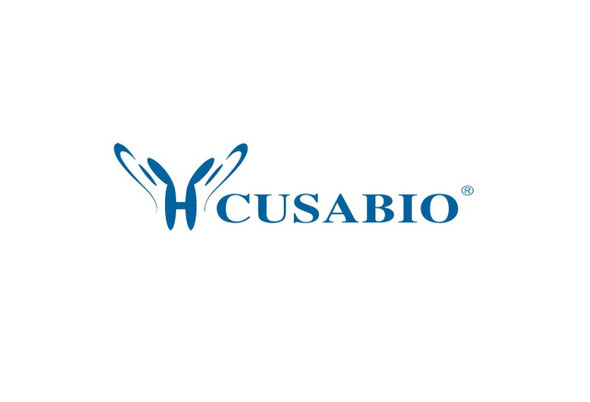Cusabio Mouse Recombinants
Recombinant Mouse Histone H1.1 (H1-1) | CSB-EP010376MO
- SKU:
- CSB-EP010376MO
- Availability:
- 13 - 23 Working Days
Description
Recombinant Mouse Histone H1.1 (H1-1) | CSB-EP010376MO | Cusabio
Alternative Name(s): H1 VAR.3Histone H1a ;H1a
Gene Names: H1-1
Research Areas: Others
Organism: Mus musculus (Mouse)
AA Sequence: SETAPVAQAASTATEKPAAAKKTKKPAKAAAPRKKPAGPSVSELIVQAVSSSKERSGVSLAALKKSLAAAGYDVEKNNSRIKLGLKSLVNKGTLVQTKGTGAAGSFKLNKKAESKAITTKVSVKAKASGAAKKPKKTAGAAAKKTVKTPKKPKKPAVSKKTSKSPKKPKVVKAKKVAKSPAKAKAVKPKASKAKVTKPKTPAKPKKAAPKKK
Source: E.coli
Tag Info: N-terminal GST-tagged
Expression Region: 2-213aa
Sequence Info: Full Length of Mature Protein
MW: 48.7 kDa
Purity: Greater than 90% as determined by SDS-PAGE.
Relevance: Histone H1 protein binds to linker DNA between nucleosomes forming the macromolecular structure known as the chromatin fiber. Histones H1 are necessary for the condensation of nucleosome chains into higher-order structured fibers. Acts also as a regulator of individual gene transcription through chromatin rodeling, nucleosome spacing and DNA methylation .
Reference: Citrullination regulates pluripotency and histone H1 binding to chromatin.Christophorou M.A., Castelo-Branco G., Halley-Stott R.P., Oliveira C.S., Loos R., Radzisheuskaya A., Mowen K.A., Bertone P., Silva J.C., Zernicka-Goetz M., Nielsen M.L., Gurdon J.B., Kouzarides T.Nature 507:104-108(2014)
Storage: The shelf life is related to many factors, storage state, buffer ingredients, storage temperature and the stability of the protein itself. Generally, the shelf life of liquid form is 6 months at -20?/-80?. The shelf life of lyophilized form is 12 months at -20?/-80?.
Notes: Repeated freezing and thawing is not recommended. Store working aliquots at 4? for up to one week.
Function: Histone H1 protein binds to linker DNA between nucleosomes forming the macromolecular structure known as the chromatin fiber. Histones H1 are necessary for the condensation of nucleosome chains into higher-order structured fibers. Acts also as a regulator of individual gene transcription through chromatin remodeling, nucleosome spacing and DNA methylation (By similarity).
Involvement in disease:
Subcellular Location: Nucleus, Chromosome
Protein Families: Histone H1/H5 family
Tissue Specificity: Restricted to thymus, testis and spleen. Present also in lymphocytic and neuronal cells. Increases in testis starting with a low level at day 5 and reaching high concentrations in 20-day old and adult animals.
Paythway:
Form: Liquid or Lyophilized powder
Buffer: If the delivery form is liquid, the default storage buffer is Tris/PBS-based buffer, 5%-50% glycerol. If the delivery form is lyophilized powder, the buffer before lyophilization is Tris/PBS-based buffer, 6% Trehalose, pH 8.0.
Reconstitution: We recommend that this vial be briefly centrifuged prior to opening to bring the contents to the bottom. Please reconstitute protein in deionized sterile water to a concentration of 0.1-1.0 mg/mL.We recommend to add 5-50% of glycerol (final concentration) and aliquot for long-term storage at -20?/-80?. Our default final concentration of glycerol is 50%. Customers could use it as reference.
Uniprot ID: P43275
HGNC Database Link: N/A
UniGene Database Link: UniGene
KEGG Database Link: KEGG
STRING Database Link: STRING
OMIM Database Link: N/A









